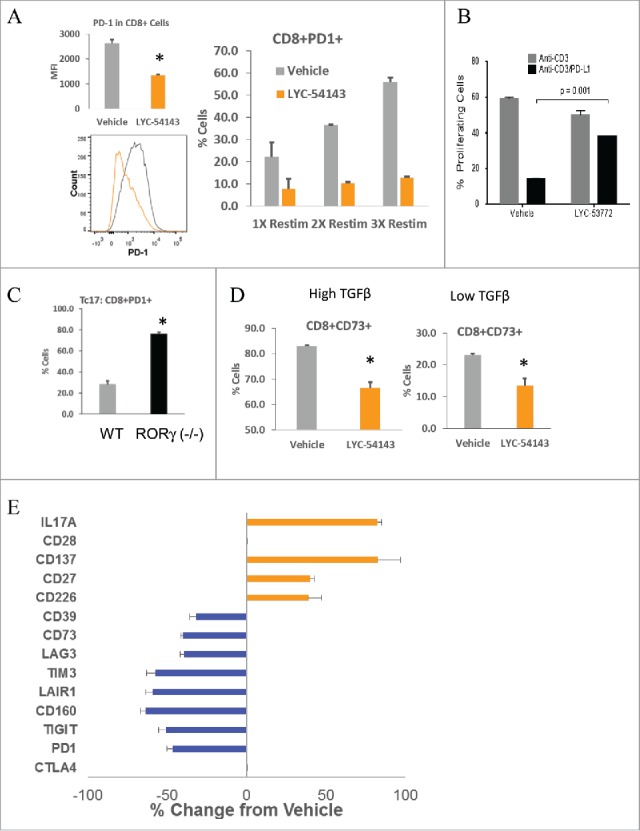Figure 3.

RORγ agonists modulate the expression of multiple co-regulatory molecules. (A) LYC-54143 decreased expression of PD-1 as well as percentage of PD-1+ cells in Tc17 cells. Left: MFI of PD-1 after one re-stimulation with anti-CD3. *p = 0.0002 LYC-54143 vs. Vehicle. Data represent mean ± SD of biological triplicates. A representative histogram is shown to compare vehicle (gray) with LYC-54143 (orange) treated samples. Right: percentage of PD-1+ cells after 1, 2, or 3 re-stimulations with anti-CD3. LYC-54143 was present during Tc17 differentiation but not during re-stimulation. (B) LYC-53772 counteracted the inhibitory effects of PD-L1. Proliferation of Type 17 T cells after re-stimulation with either anti-CD3 or anti-CD3/PD-L1 was analyzed using CFSE labeled cells. Data represent mean ± SD of biological duplicates. (C) Comparison of PD-1 expression in WT and RORγ deficient cells. *p = 0.00001 between WT and RORγ (−/−) cells. Data represent mean ± SD of biological triplicates. (D) LYC-54143 decreased the percentage of CD73+ cells in the presence of high (1.25 ng/mL) or low (0.25 ng/mL) concentrations of TGFβ. *p < 0.002 Vehicle vs. LYC-54143. Data represent mean ± SD of biological triplicates. (E) LYC-54143 increased the expression of multiple co-stimulatory receptors and decreased the expression of multiple co-inhibitory receptors in Type 17 T cells. The expression of indicated proteins was analyzed by flow cytometry. The frequencies of positive cells for each marker in vehicle and LYC-54143-treated cells were used to calculate % Change from Vehicle. Data represent mean ± SD of biological triplicates.
